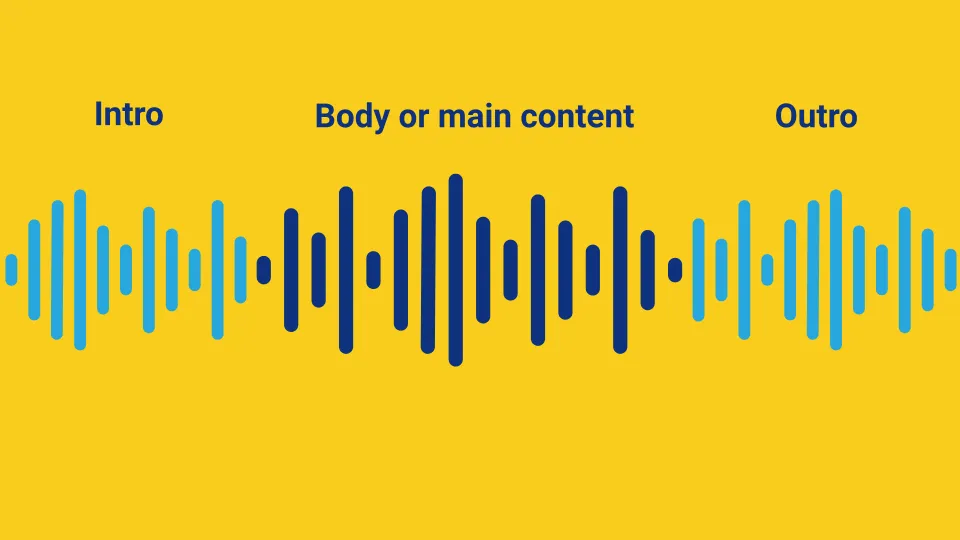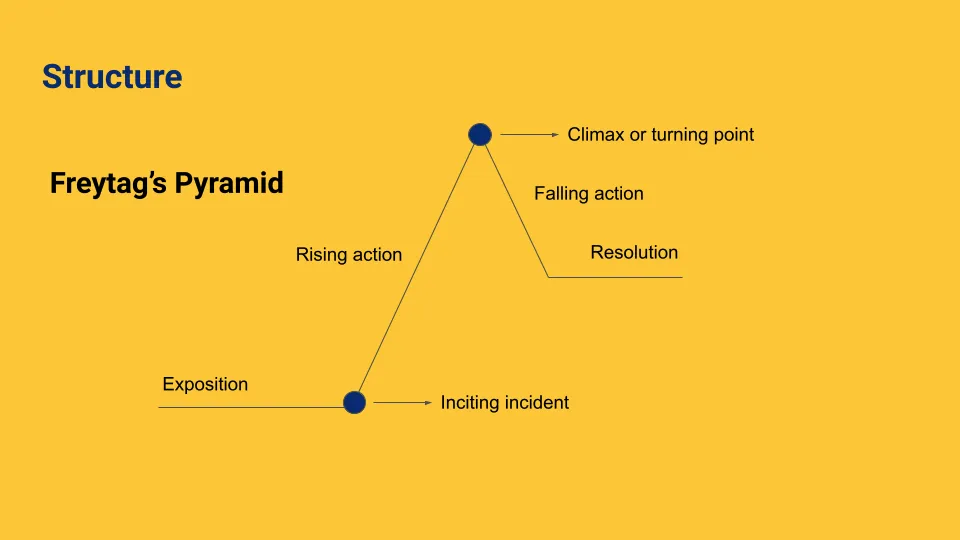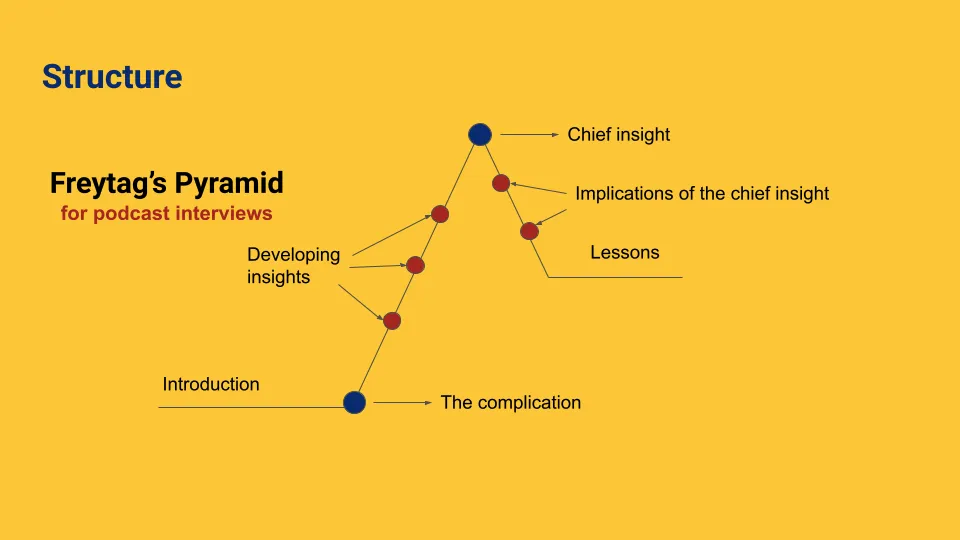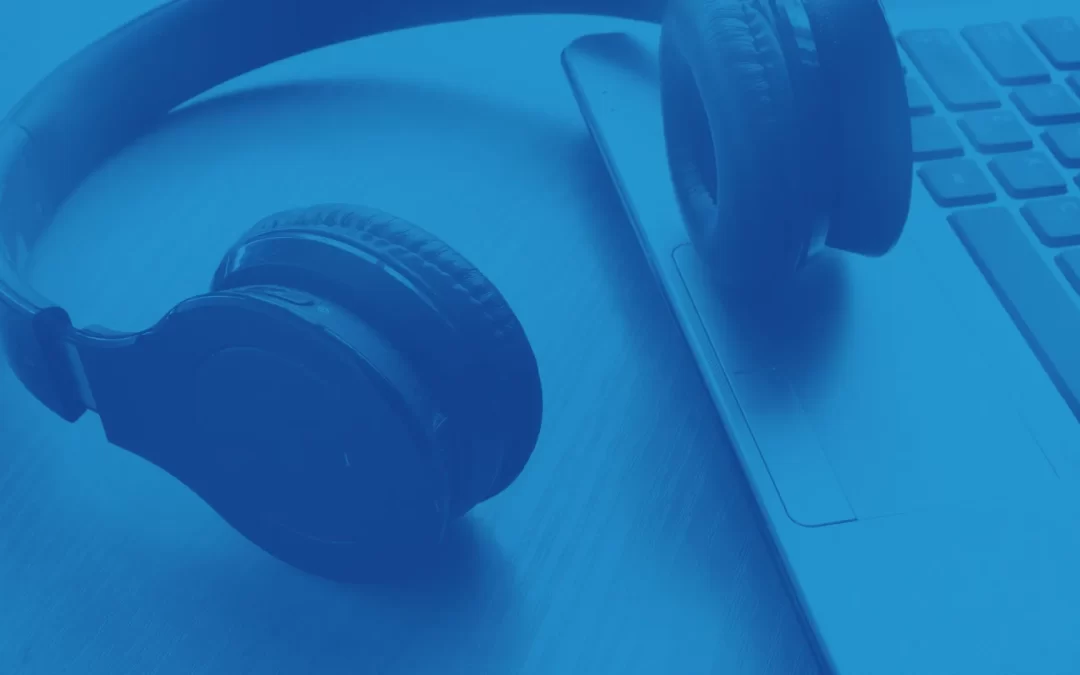Last month, I hosted a masterclass for Teachable’s Creator Starter Pack community on podcasting, where I talked about all of the frameworks that help boost audio storytelling. But I believe there is only one podcast interview framework that has universal appeal for brands, entrepreneurs, and content creators, and that’s what I want to address today.
What’s a podcast interview framework?
A podcast interview framework is a structure you give your audio, including when you ask certain questions, when to include music or sound effects, and when to include other material like natural sound or gathered interviews to build a more compelling story.
Your basic interview podcast has its own framework, but it lacks specific storytelling devices. For example, a basic interview will have music to start the show, a host introduction, dialogue with a guest, and then music to close the show. It’s very simple. It doesn’t have a specific storytelling goal, other than maybe a good conversation held by two or more charismatic people.

It’s for this very reason I emphasize better audio storytelling during the podcast development process.
A framework provides more instructions for the podcaster to create engaging content. Those instructions include having a hook, identifying a conflict or complication, building tension through insight, a climax, and some sense of resolution.
The best podcast interview framework is Freytag’s Pyramid
Freytag’s Pyramid is a basic storytelling structure that is perfect for narrative and interview podcasts. The elements of the structure include an exposition, the introduction of an issue or problem in the form of an inciting incident, rising action as a result of recognizing this conflict, a climax, and then falling action and resolution, in which the effects of the climax is understood and resolved.

A simpler way to understand this is something happens that sets us down a path of exploration … until we have a significant revelation or experience. The fallout of this experience is explored. Finally, through the story, we now better understand these events and maybe ourselves.
For interview podcasts, this translates to an introduction of a problem or complication, followed by developing insights and then a chief insight that serves as the climax. The fallout of this chief insight is discussed and pored over.

In my masterclass, I gave the example of The Ezra Klein Show podcast from the New York Times. Ezra does a great job of introducing complex problems. He breaks each problem down into chunks and builds toward a “chief insight.” This chief insight is usually teased in the opening monologue from Ezra as some concept he wants to explore further. And once we get to that chief insight, we’re able to really take our thinking about the subject or issue to the next level. I highly recommend the show as an excellent model for interview podcasts.
(Here are some more examples of Freytag’s Pyramid for content marketing.)
Here’s how you set up the framework for your podcast
To demonstrate Freytag’s Pyramid for an interview podcast, I’m going to use the topic of cryptocurrencies. It’s a hot topic and there’s plenty of discussion on this subject. But I would argue that it’s a topic that deserves more inspection. So let’s start there.
Introduce the problem
Through a monologue or short Q&A, I’ll tell my listeners why I’m interested in cryptocurrencies for this episode: Because I believe they need more scrutiny and because they’re volatile and speculative.
Relay an inciting incident
On Saturday, Warren Buffet spent some time at his company’s annual shareholder’s meeting criticizing the value of Bitcoin, saying he doesn’t believe the cryptocurrency can ever replace the dollar. So, essentially, what’s the point? Warren Buffet will serve as the hook for the episode. My listeners will want to stick around to understand his reasoning. In this situation, I would want to pull audio from the shareholder meeting to include in my episode as a soundbite. I’d also tease more comments from Buffet and what my listeners can expect from my guest and me.
Identify developing insights
For this interview, I’ll ask my guest about important aspects of cryptocurrency that help my audience understand the subject more. I’ll ask about environmental issues and energy consumption, illicit markets, and the theft of millions of dollars that move anonymously online thanks to crypto. I’d also ask about Buffet’s past comments on Bitcoin, which might help explain why these current comments are of significance. These developing insights should all be enticing subjects on their own. Think of them as mini hooks that can be boosted with soundbites and music to enhance or reflect their importance. Only after I’ve exhausted these threads of the discussion, will I move on to my main point or chief insight.
Chief insight
The chief insight of my cryptocurrency interview will tie directly to my introduction of the problem and the inciting incident, which will be a question and answer about the speculative nature of cryptocurrencies. This may come in the form of the question, “Is Warren Buffet right?” I’ll use more audio from Buffet’s remarks to enhance the moment and music to signify the importance of the issue.
Implications of the chief insight
After my guest reveals what they think about the speculative nature of cryptocurrencies, I’ll spend the rest of our interview exploring the implications of this issue, asking and relaying my own thoughts on the matter and how it ties into all of the developed insights previously discussed.
Resolution
I’ll end my interview after I’ve resolved the question of what my guest and I think about the nature of cryptocurrencies, and whether Warren Buffet’s comments really matter.
Why this podcast interview framework works for brands, entrepreneurs, and content creators
This framework is predicated on the notion that you’re:
- Conducting research
- Screening your guests to evaluate what they might say,
- That you’re scripting your questions and introduction, and
- That you’re editing your audio so that it aligns with the basic structure of Freytag’s Pyramid
As you do more complex storytelling, the basic structure remains the same. You can involve multiple interviews, so long as you understand where your guest’s comments fit into the story. And the same goes for solo podcasters. You can use the framework to build compelling narratives around your episode topics. Finally, you can layer on top of this structure other audio storytelling elements, like music and sound effects, to accentuate different parts of your story.
This is why Freytag’s Pyramid works so well for content creation. The framework gives branded podcasts several creative opportunities to quickly and easily build engaging stories that both inform and entertain your audience about topics within your domain of expertise. When done correctly, the net benefit will be an engaged audience throughout the podcast episode. And as an individual content creator, you get the benefit of a storytelling framework that can be upscaled or downscaled based on your level of effort or free time. And everyone gets to avoid another boring interview podcast.
That’s a wrap for this month. Let me know your thoughts, feedback, recommendations, or questions on your branded podcast by leaving a comment or reaching out to me on Twitter or LinkedIn. If you want more content like this in your inbox, sign up for my monthly newsletter here.

